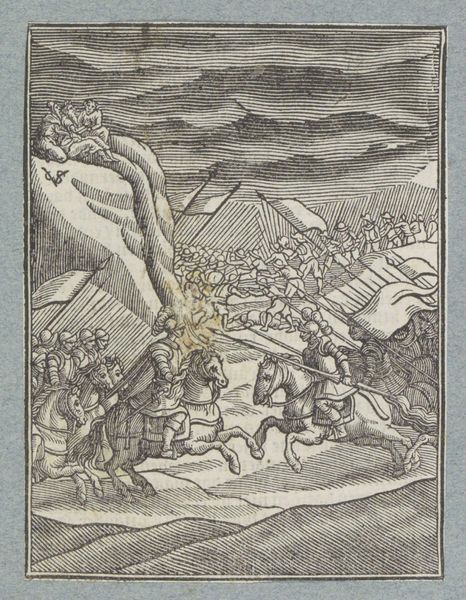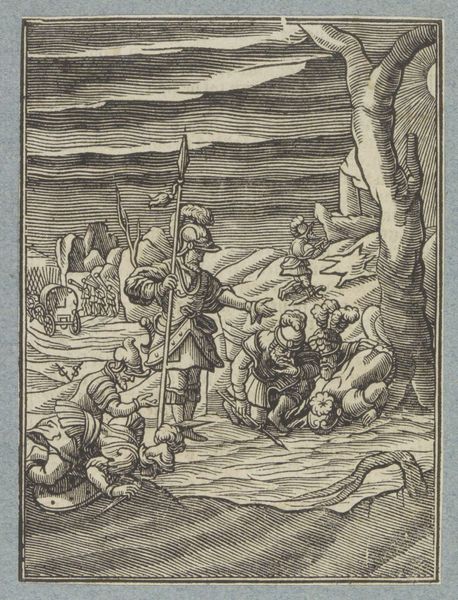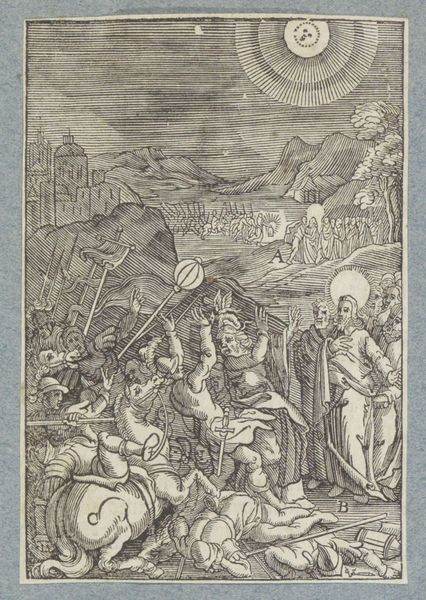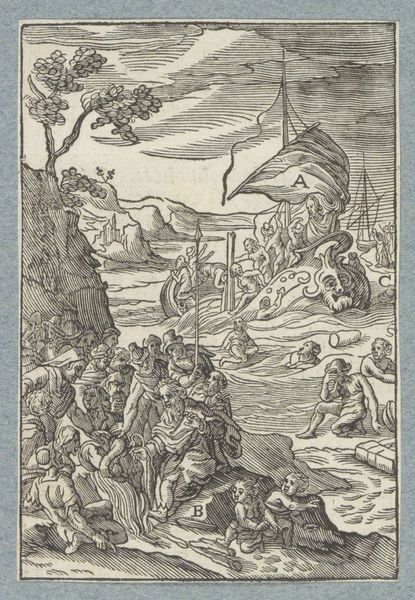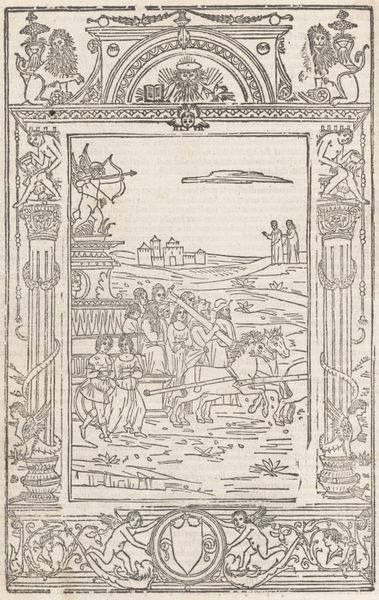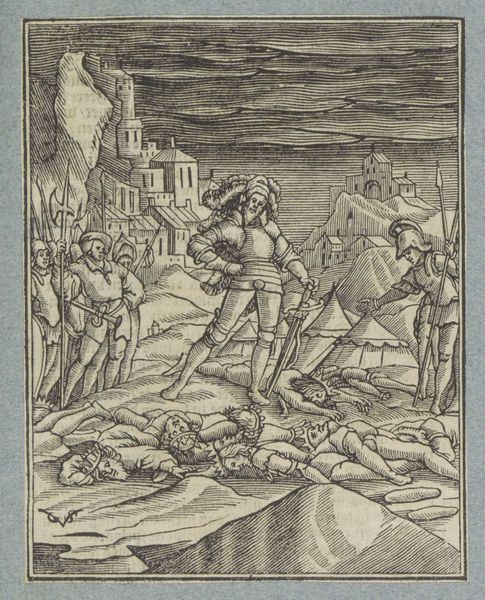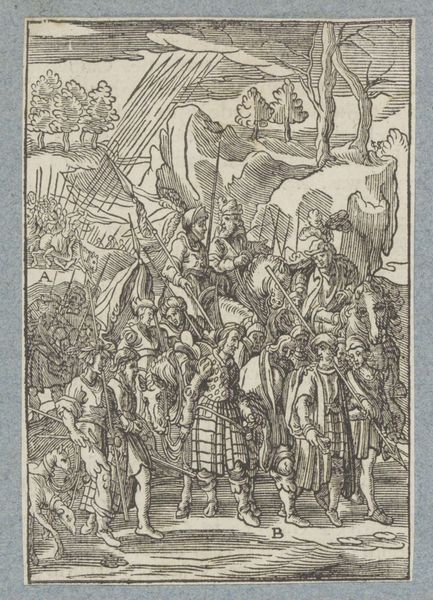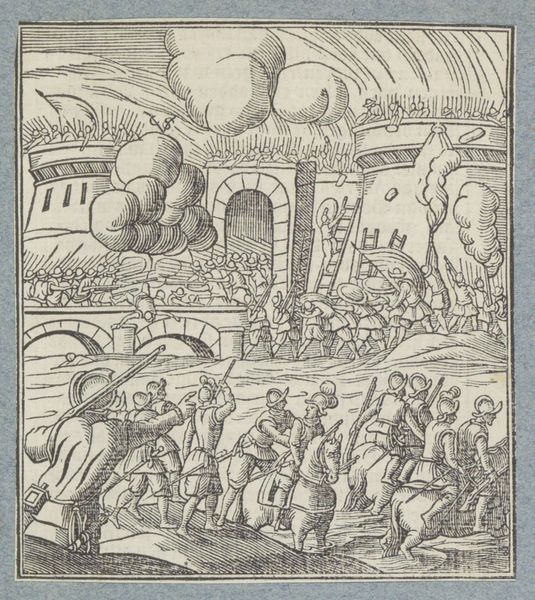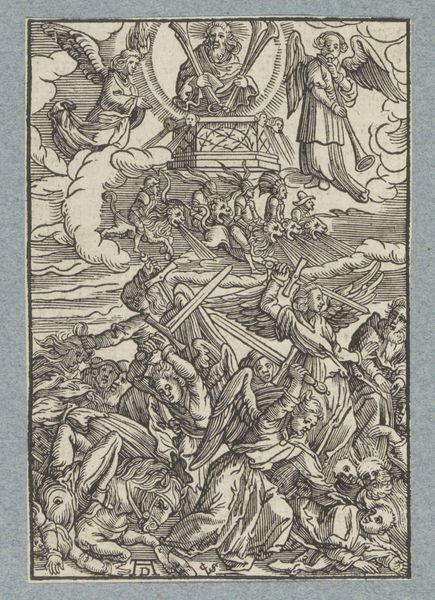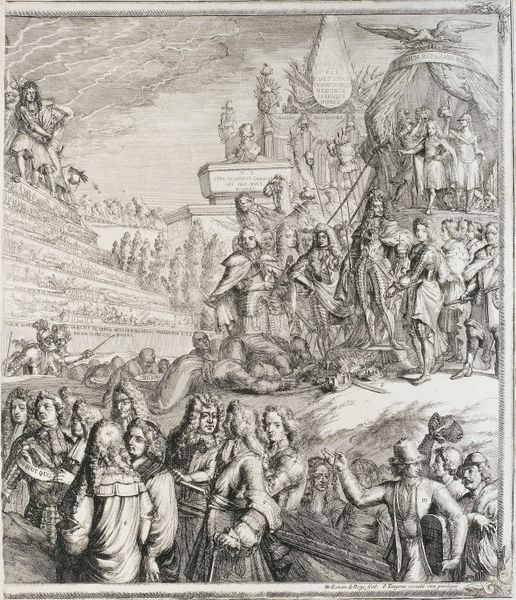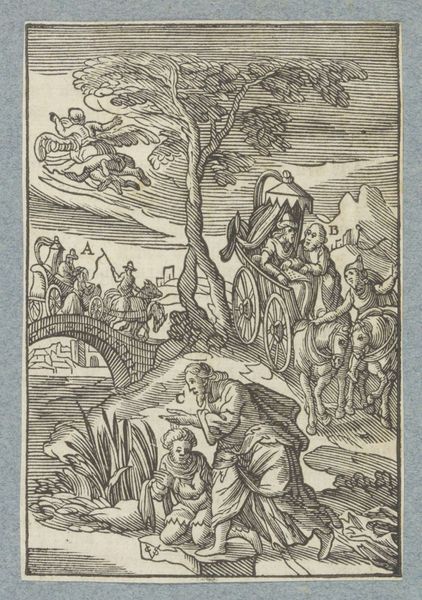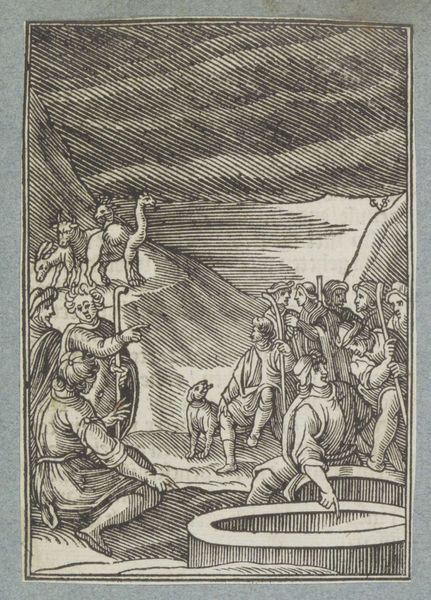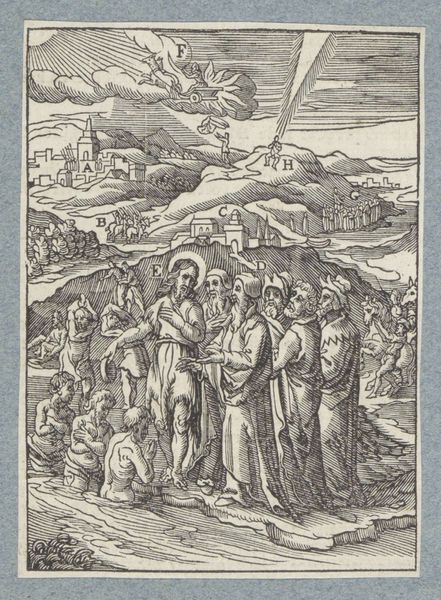
print, woodcut, engraving
#
narrative-art
#
baroque
# print
#
landscape
#
figuration
#
woodcut
#
line
#
history-painting
#
engraving
Dimensions: height 113 mm, width 83 mm
Copyright: Rijks Museum: Open Domain
Editor: So, here we have Christoffel van Sichem the Younger's woodcut and engraving, "Israelites Crossing the Jordan," from 1645-1646. It's striking how much detail he packed into this black and white print. How do you interpret this work within its historical context? Curator: This image speaks volumes about the political and religious climate of the 17th century. Visual representations of the Israelites’ exodus often served as powerful allegories for contemporary struggles, particularly for groups seeking liberation or facing persecution. Consider the Dutch Republic’s own fight for independence from Spain during that era. Editor: It’s interesting to think of it as coded political commentary. The scale of the figures seems deliberately overwhelming too. Curator: Exactly. Think about the artist's decision to depict such a massive group. Is it merely illustrative, or does it reflect the social dynamics and anxieties of the time? Does the artist subtly position certain figures to indicate a social hierarchy or the distribution of power? The composition hints at who gets to shape the narrative and who's being left behind in the grand scheme. Editor: That gives me a lot to think about! So it’s not just a biblical scene, but a reflection of contemporary societal power dynamics, told through this lens. Curator: Precisely. And recognizing this potential commentary invites a deeper exploration. Consider for whom this image was produced and consumed. Understanding that exchange will illuminate what messages Sichem was hoping to circulate and who would have been most responsive to his visual language. Editor: I never thought about it that way before, but understanding that kind of framing really changes how you view the artwork. Curator: Indeed, every work of art exists in dialogue with its world, reflecting and refracting the realities of its time. It is important to understand that art, even with a historical scene, has always and continues to be deeply rooted in its present, constantly in conversation.
Comments
No comments
Be the first to comment and join the conversation on the ultimate creative platform.
